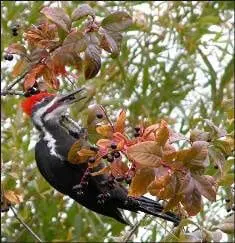The City of Bellingham has a management tool for the City’s terrestrial and freshwater habitats available for public use.
The purpose of the Habitat Restoration Technical Assessment (Restoration Assessment) is to provide a science-based framework to guide future habitat restoration, protection, and recovery. In addition, the Restoration Assessment helps to fulfill the City’s Legacies and Strategic Commitments by addressing Clean, Safe Drinking Water; Healthy Environment; and Sense of Place in actionable and accessible ways.
Documents
Key Excerpts
- Fish Use – Table 38 (PDF)
- Summary Results of Comprehensive Prioritization -Table 43 (PDF)
- Tier 1 Maps and Summaries (PDF)
Potential Users
The Restoration Assessment is intended for use by City staff, consultants, citizens and natural resource organizations to screen and select restoration, mitigation and protection actions. The document can also be used to coordinate City, private and non-profit efforts.
Restoration Assessment Overview
The Restoration Assessment encompasses all areas within the city limits and urban growth area, with the exception of estuarine/marine areas and the Lake Whatcom watershed. Estuarine and marine nearshore areas are addressed in a separate document, the WRIA 1 Nearshore and Estuarine Assessment and Restoration Prioritization (CGS, 2013). Similarly, the Lake Whatcom watershed has undergone numerous evaluations for restoration priorities under the separate Lake Whatcom Management Program. The Restoration Assessment provides a similar science-based assessment tool for terrestrial and freshwater habitats.
The Restoration Assessment divides habitats into four habitat types:

- wetland
- riverine
- meadow/shrub and
- forest
The document assesses current functions for each of the four habitat types and then completes three prioritization exercises to identify restoration and protection actions:
- Preliminary Prioritization: prioritizes actions and locations based solely on ecological factors
- Secondary Prioritization: refines Preliminary Prioritization results to identify the probability of the ecological improvement by adding factors such as feasibility, scope, and scale
- Comprehensive Prioritization: refines the Secondary Prioritization result to identify actions that would result in improvement over multiple habitat types
Prioritization results were used to rank the City’s sub-watersheds into three tiers:
- Tier 1 sub-watersheds: Sub-watersheds where actions have the potential for the maximum practicable improvement across multiple habitat types. The Restoration Assessment provides detailed information for the Tier 1 sub-watersheds, including a menu of recommended restoration and protection actions with associated maps.
- Tiers 2 and 3 sub-watersheds: Sub-watersheds where actions could benefit a specific habitat or function but are not likely to have the broad improvement that define the Tier 1 sub-watersheds. The Restoration Assessment prioritizes general types of actions but does not provide the additional detailed information done for the Tier 1 sub-watersheds.
Potential Applications
The Restoration Assessment can be used to inform restoration actions and programs in many ways.
- Characterizing existing ecological conditions and functions
- Comparing habitat functions, restoration needs, and opportunities
- Identifying which actions are most likely to be effective
- Identifying where actions are most likely to be effective
- Serving as the foundation for a future City mitigation program
Background and Contributors
The final Restoration Assessment represents a multi-year effort by the project team, citizens, and staff. Early in the project timeline, key insight was gathered from community members during an October 2013 public Open House. The team also received on-going support from a Technical Advisory Group (TAG) of academics, resource agency staff, consultants and citizens representing 10 different entities. The TAG helped guide the project from beginning through completion in 2015.
When the project began, the goal was to create a Master Plan that combined scientific information with community values. However, during the process of assessing and documenting habitat conditions, the project team and TAG recognized the need for a science-based document. Therefore, they agreed the final document would be a “technical assessment,” allowing users to utilize the document as a scientific tool. The final Restoration Assessment is that science-based tool.
Background Documents:
Consultant Team:
- Environmental Science Associates (ESA)
- Northwest Ecological Services (technical assistance)
- Veda Environmental (Advisory Group coordination and facilitation)
Additional Habitat Restoration Information
